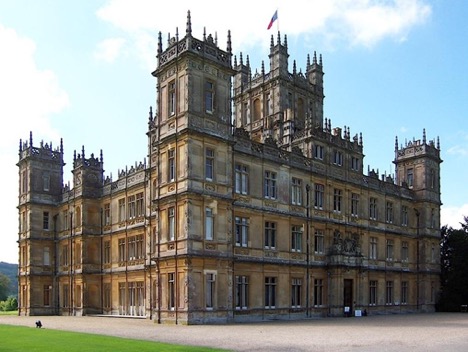Hays Code Hollywood
Where Downton Abbey Fits In

Spoiler Alert: This article contains spoilers.
It seems that once a year, Downton Abbey writer Julian Fellowes thinks, “How can I make the character Thomas Barrow more miserable?”
Downton ran for six seasons, from 2011 to 2015 ,and depicts a wealthy, aristocratic British family and their servants in the early twentieth century. It starts with the sinking of the Titanic in April 1912, following history until its end in 1925.
The show mostly focuses on the interpersonal relationships between the characters, such as the marriages of the family’s daughters and how the servants downstairs get along. It also focuses on historical events, like World War I, Irish independence, and the eventual decline of the aristocracy.
Although the show ended four years ago, Downton is still popular as ever, and a movie, acting as a continuation of the series, was released on September 20.
The movie depicts the king’s and queen’s visit to Downton Abbey and the chaos that ensues. There is animosity between the Downton staff and the royal staff, as well as romance, inheritance issues, and everything else that makes Downton as lovely as it is.
While glitzy and glamorous, Downton does not shy away from the negative aspects of living in this time. It discusses the class divide, lack of good medical care, and war. These negative aspects, however, are most notable for the show’s sole gay character, Thomas Barrow (played by Rob James-Collier).
Thomas starts as a footman in the Downton Abbey household, and by the end becomes the house’s butler. He also undergoes significant character growth, going from a conniving monster to a much kinder and compassionate, albeit still conniving, character.
But one thing is consistent throughout the show: the hardships Thomas faces in every season. He nearly loses his job several times, he’s on the front lines during WW I, he takes drugs to try to change his sexuality, he tries to kill himself, and by the end of the show, he receives no real happiness.
The Hays Code was a set of moral industry guidelines set in place for the first part of the twentieth century. One of these guidelines was the required absence of LGBT characters (this was never directly mentioned, but implied under the rule against “sexual perversion”) unless their sexuality was shown as malicious.
If the LGBT character was punished for their sexuality, then it was acceptable. Thomas was punished for his sexuality so much that Downton Abbey wouldn’t seem too out of place in Hays Code-Era America.
Downton seems to be written to appeal to those on both sides: the people who want more LGBT representation on TV, and those who actively dislike it. Thomas, while indeed a gay character, endures so much hardship that the show appeased those who wanted to see gay people suffer.
His homosexuality was never portrayed as a positive thing; it was portrayed as an unfortunate happenstance considering the period. The show loves to remind its viewers that, yes, this show takes place in the early twentieth century, and yes, gay people suffered then.
That’s why it seems so jarring in the new Downton movie when Thomas is happy. Thomas, having been kicked out of Downton during the king and queen’s visit, spends the afternoon with the king’s valet, Richard Ellis. Richard then leaves him at a bar while he visits his parents, and Thomas meets another man, Chris Webster.
After a few cryptic interactions, Chris takes Thomas to an underground gay club. Thomas is utterly overjoyed for the first time in the series, as he sees men dancing and kissing. For several blissful minutes, he dances with Chris, until the cops come and arrest everybody.
Thomas is horrified, until the next scene when Richard bails him out. They exchange flirtations outside and spend the rest of the night talking about their experiences as gay men. The next day, Richard gives Thomas a pendant and they kiss before Richard leaves.
At first glance, this seems incredible. Thomas never really got the ending he deserved in the show, and here he was in a true romantic relationship. Julian Fellowes finally portrayed gay characters in a positive light. After some contemplation, though, it is less spectacular than it seems.
Julian Fellowes seems to want Thomas to continuously suffer; even though he is happy by the end, his significant other is still someone working for the king, whom he can’t see very often, if ever. They will have to hide their relationship because of the time, and Thomas will still suffer from his internalized homophobia because of it, despite some more validation he received in the movie.
And what about all the other men from the club who don’t have boyfriends working for the king to bail them out?
Nevertheless, this is still an important landmark for LGBT representation. Downton Abbey, which had always treated Thomas’s homosexuality as something he had to suffer for, is finally respecting him and giving him a happy—or at least happier—ending, just like everyone else.
Even though Fellowes seems to take some sort of sadistic pleasure from Thomas’s terrible situations, he has come through and made a more positive LGBT storyline for a character who desperately needed it. Whether or not we have a sequel, we know we’ll always have a happier Thomas, getting the ending he deserves.

This is Gab’s second year on the Banner and first as a section editor! She loves writing about her random passions, which is why she loves A&E so...


A Friend • Oct 15, 2019 at 1:29 pm
Thank you Gabrielle, very cool.